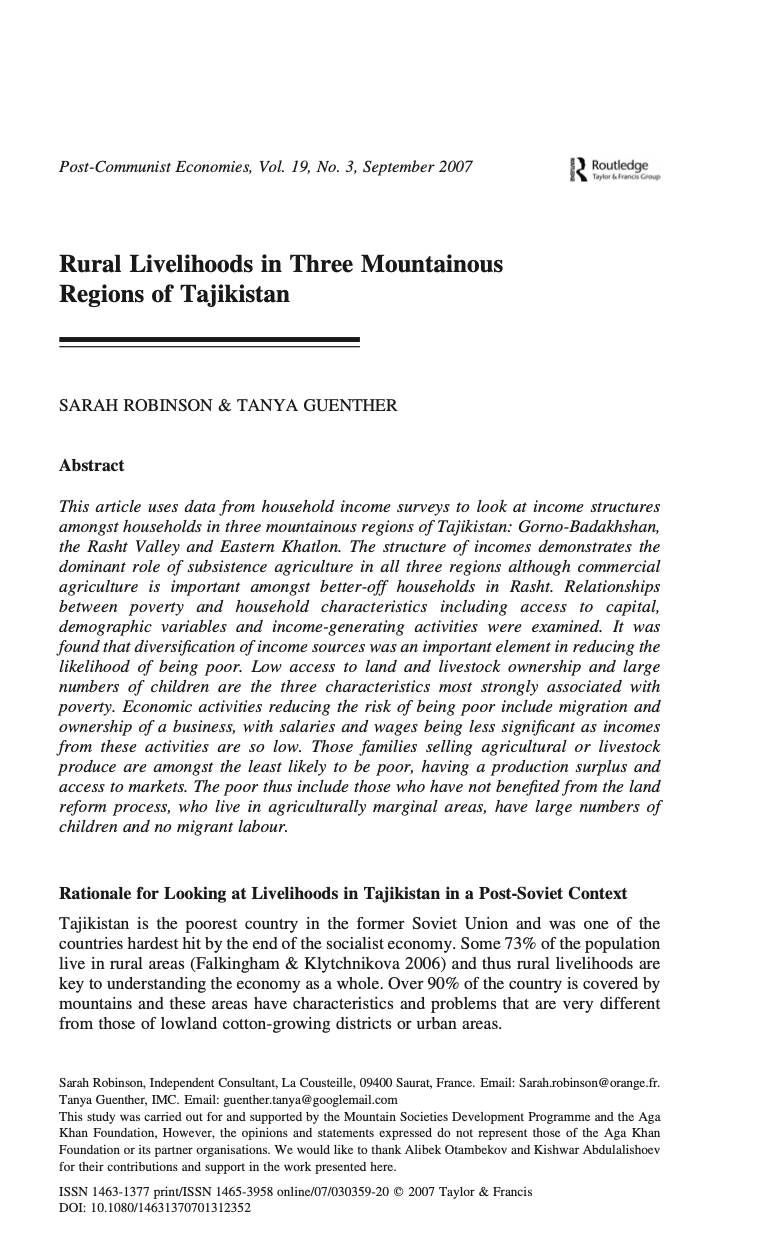Resource information
This article uses data from household income surveys to look at income structures amongst households in three mountainous regions of Tajikistan: Gorno-Badakhshan, the Rasht Valley and Eastern Khatlon. The structure of incomes demonstrates the dominant role of subsistence agriculture in all three regions although commercial agriculture is important amongst better-off households in Rasht. Relationships between poverty and household characteristics including access to capital, demographic variables and income-generating activities were examined. It was found that diversification of income sources was an important element in reducing the likelihood of being poor. Low access to land and livestock ownership and large numbers of children are the three characteristics most strongly associated with poverty. Economic activities reducing the risk of being poor include migration and ownership of a business, with salaries and wages being less significant as incomes from these activities are so low. Those families selling agricultural or livestock produce are amongst the least likely to be poor, having a production surplus and access to markets. The poor thus include those who have not benefited from the land reform process, who live in agriculturally marginal areas, have large numbers of children and no migrant labour.

